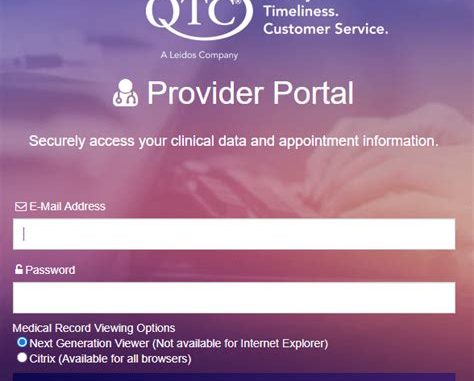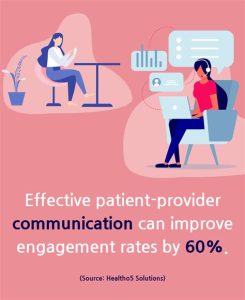
Explore QTCM Solutions for healthcare: versatility in provider admin, customizable options, their benefits, and implementation strategies. Enhance healthcare efficiency. In the rapidly evolving landscape of healthcare, efficiency and adaptability are paramount. Quality and Cost Transparency Management (QTCM) solutions are revolutionizing how healthcare administrators manage operations, ensuring that quality care can be delivered cost-effectively.
This blog post delves into the realm of QTCM, explaining what it is, and exploring the significant advantages of flexibility and customizability it offers. From enhancing the administrative capacities of healthcare providers to the seamless implementation within current systems, discover how QTCM can be tailored to meet the specific needs of any healthcare entity. Join us as we unpack the benefits and discuss practical guidelines for integrating QTCM solutions effectively into healthcare operations, paving the way for a more dynamic and responsive healthcare environment.
What is QTCM Solution?
QTCM Solution, or Quality, Time, Cost, and Management Solution, refers to a comprehensive framework designed to enhance the efficiency and effectiveness of service delivery in various sectors, prominently including healthcare. This type of solution strives to optimize the key aspects of quality, time, and cost, thereby facilitating improved service management. At its core, the essence of a QTCm solution lies in its ability to streamline operations and harness technology to meet the ever-evolving demands of clients and industries.
Implementing a provider admin QTCM Solution involves systematic procedures meant to assess and augment the processes within an organization. The very architecture of these solutions is built to be inherently robust yet flexible, thus enabling them to be adapted according to specific organizational needs. Moreover, these solutions equip businesses with the critical insights needed to make informed decisions that can lead to significant improvements in operational efficiency and client satisfaction.
The allure of incorporating a QTCM Solution in any business landscape is its potential to drive constructive changes by meticulously addressing the pain points related to quality management, cost efficiency, and time optimization. By doing so, QTCM Solutions not only enhance the immediate operational capabilities of an organization but also bolster its long-term strategic outcomes. Consequently, more and more businesses, especially in the healthcare sector, are turning towards QTCM Solutions to gain a competitive edge in their respective markets.
Flexibility in Provider Admin
The concept of flexibility in provider admin within the realm of QTCM solutions is pivotal in addressing the diverse and ever-evolving needs of healthcare organizations. By integrating highly adaptable frameworks, these solutions empower healthcare facilities to swiftly respond to changes in healthcare regulations, patient needs, and technology advancements. This adaptability not only enhances operational efficiency but also ensures that patient care is both timely and effective.

In provider admin, flexibility means more than just the ability to choose between options; it encompasses the capability to customize and adjust administrative processes in real-time. Whether it’s scheduling, billing, or patient data management, the ability to tailor these functions to meet specific requirements is crucial. This not only streamlines workflows but also reduces the administrative burden on staff, leading to improved job satisfaction and lower turnover rates.
Moreover, the benefits of such flexibility are far-reaching, impacting not only administrative capacities but also clinical outcomes. A flexible QTCM system allows for better data management and accessibility, enabling providers to make more informed decisions and, consequently, deliver higher quality care. With the rise of digital health technologies, having a QTC’m solution that can easily integrate new tools and adapt to emerging trends is indispensable for modern healthcare providers.
Customizability of QTCM Solutions
The notion of customizability within QTCM solutions signifies a transformative approach in healthcare management. By tailoring methodologies and features to suit specific workflows and needs, healthcare providers can greatly improve both the efficiency and efficacy of their services. This ability to customize touches various facets of the care continuum, dramatically enhancing patient outcomes and operational excellence.
One of the primary advantages of high customizability is its capacity to align with the unique protocols of different healthcare settings. Whether it’s a multi-specialist hospital or a small private clinic, QTCM systems can be programmed to handle varying levels of complexity and specificity, thereby ensuring that the most apt processes and protocols are in place, meticulously designed to meet the diverse needs of each institution.
Furthermore, the customizability of QTCM solutions often includes integration capabilities with other software systems, which is crucial for a seamless flow of information across platforms. This interconnectivity ensures that all aspects of patient care are harmonized and that data-driven decisions are made swiftly and accurately, bolstering the overall quality of care delivered. Consequently, healthcare providers can relish a system that not only adapics to their immediate needs but also evolves alongside their growing demands.

Benefits of Flexibility and Customizability
The benefits of flexibility and customizability in any healthcare technology solution, such as Quality and Compliance Management (QTCM) solutions, cannot be understated. In the ever-evolving sector of healthcare, the ability to adapt and mold software to meet the changing demands and particular requirements of a healthcare provider enhances efficiency and quality of care. Healthcare administrators can significantly benefit from systems that are tailored to align with their specific operational needs and patient care paradigems.
Often, the flexibility of QTCM solutions enables healthcare facilities to seamlessly integrate new functionalities or modify existing ones without disrupting the ongoing processes. This adaptability becomes critical when regulatory changes occur or when healthcare institutions decide to expand their services. The capacity to adjust the software easily ensures that institutions can remain compliant with new regulations and can continue providing high-quality care without any significant delays caused by system updates or changes.
Furthermore, the customizability of QTCM solutions ensures that each healthcare provider can have a setup that perfectly fits their workflow, thereby reducing errors and inefficiencies. Customizable solutions can offer user-specific interfaces, which make it easier for staff to manage their tasks effectively. Tailoring the system according to the staff’s skill set and the institution’s unique workflow can lead to improved accuracy in data handling and a subsequent increase in patient satisfaction through better service delivery.
Implementing QTCM Solutions in Healthcare
The process of implementing QTCM solutions in healthcare is pivotal for enhancing operational efficiencies and patient outcomes. By integrating Quality, Time, Cost, and Management (QTCM) frameworks, healthcare providers can manage resources more effectively while delivering high-quality care. This comprehensive approach enables healthcare facilities to tailor their services to meet the specific demands and complexities of their operations.
One of the critical phases in implementing QTCM solutions is the collaboration between technology providers and healthcare administrators. This synergy facilitates the creation of customizable platforms that adapt seamlessly to the dynamic landscape of healthcare needs. The adaptability of QTCM tools allows for continual improvements in processes, which ensures that patient care practices are always at the forefront of technological and procedural advancements.

The ultimate goal of implementing QTCM solutions is to elevate patient satisfaction and streamline healthcare management. By doing so, healthcare providers can not only maximize resource utilization but also enhance the quality of care provided. This leads to better health outcomes and increased operational transparency, making QTCM an invaluable asset in the modern healthcare industry.
Frequently Asked Questions
What is QTCM in the context of provider admin solutions?
QTCM, or Quality, Time, Cost, and Management, refers to a framework used in provider admin solutions to optimize healthcare operations and services, ensuring they are efficient, cost-effective, and of high quality.
How does flexibility in QTCM solutions benefit healthcare providers?
Flexibility in QTCM solutions allows healthcare providers to adapt to varying patient needs, regulatory changes, and evolving healthcare technologies. This adaptability helps maintain high standards of care and operational efficiency.
Can you give examples of features that might be customizable in QTCM solutions?
Customizability ensures that QTCM systems can be tailored to the specific processes and workflows of a healthcare facility, improving system integration, user adoption, and overall effectiveness in managing quality, time, and costs.
What challenges do providers face when implementing flexible QTCM solutions?
Typical customizable features in QTCM solutions include user interfaces, report generation modules, data input forms, and compliance tracking mechanisms, which can all be adjusted to meet specific administrative and clinical requirements.
What are the long-term benefits of using a flexible and customizable QTCdm system?
Challenges include aligning the solution with existing IT infrastructure, training staff on new systems, ensuring data security and privacy, and managing the costs associated with customization and ongoing adjustments.
How important is vendor support in the successful deployment of flexible QTCM solutions?
Long-term benefits include increased operational efficiency, reduced administrative costs, improved patient outcomes due to better quality management, and enhanced ability to respond to industry changes and challenges.

Leave a Reply